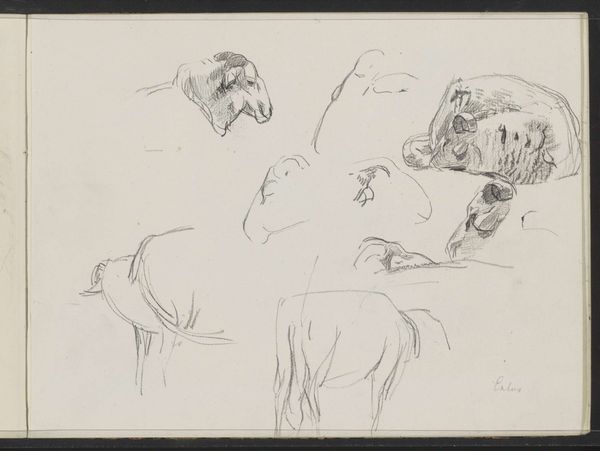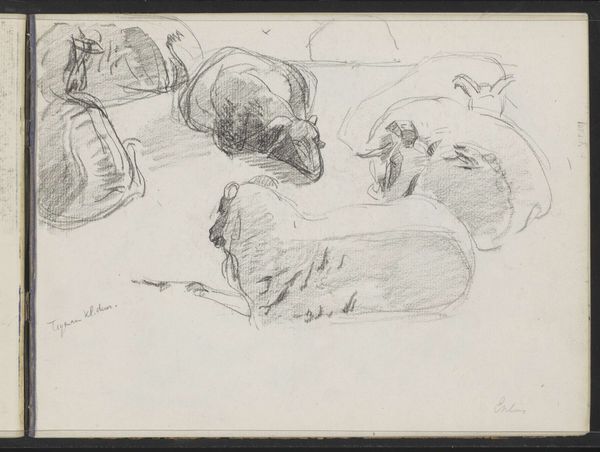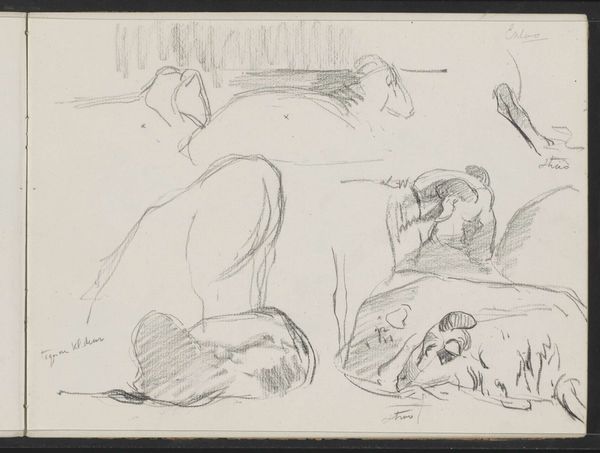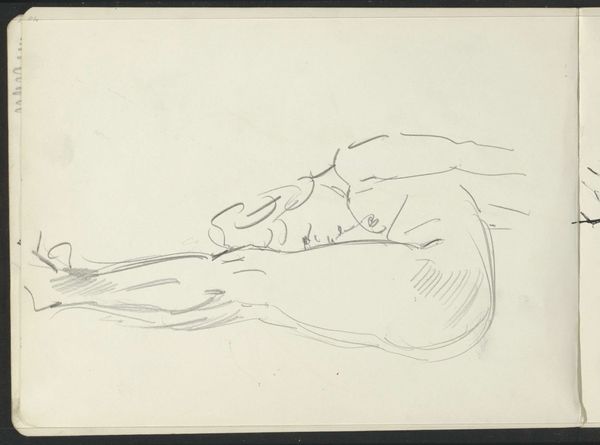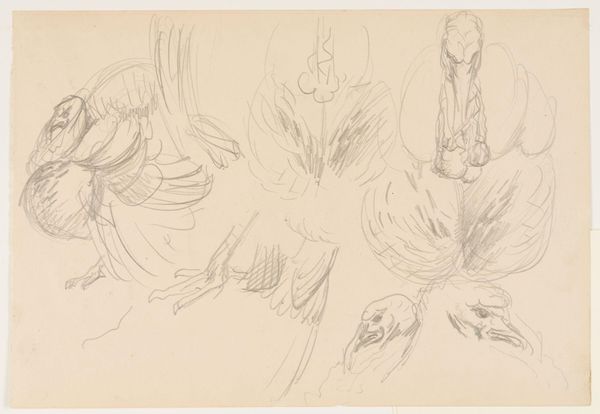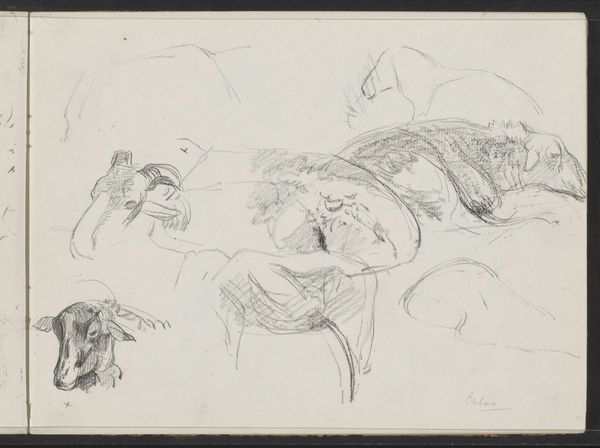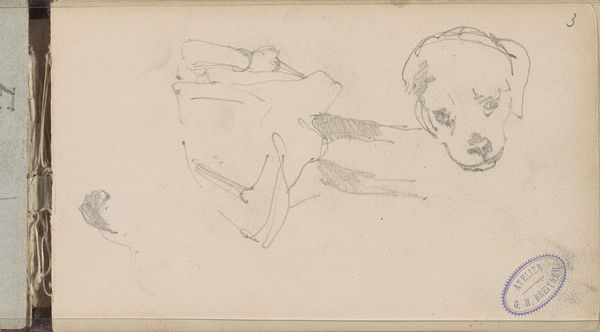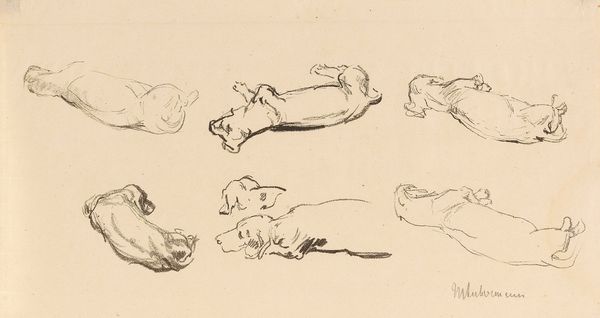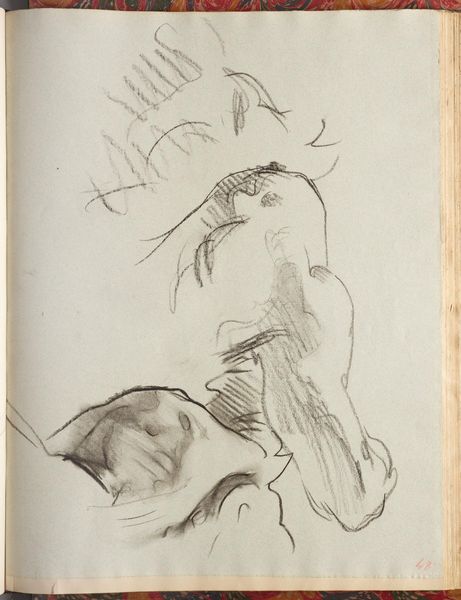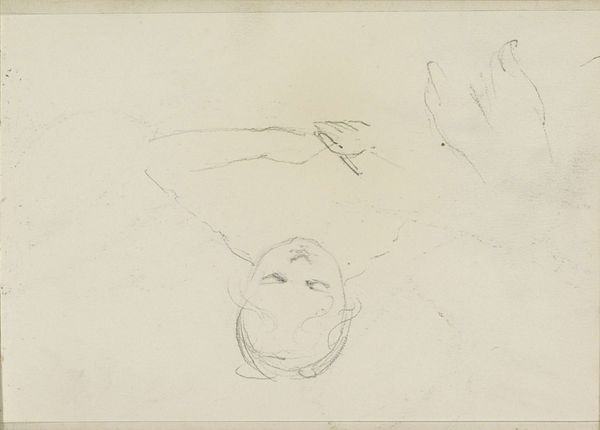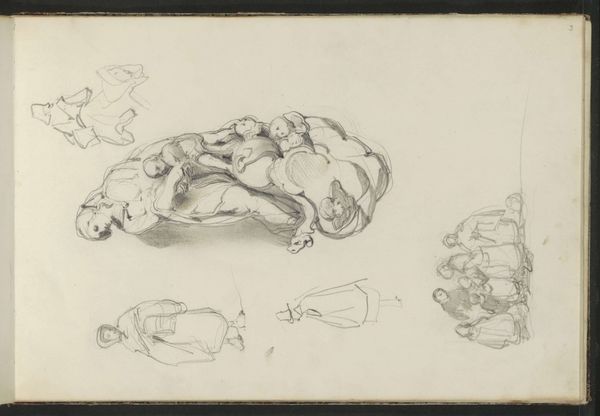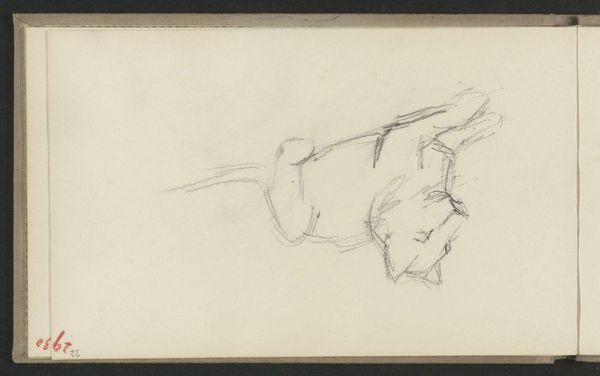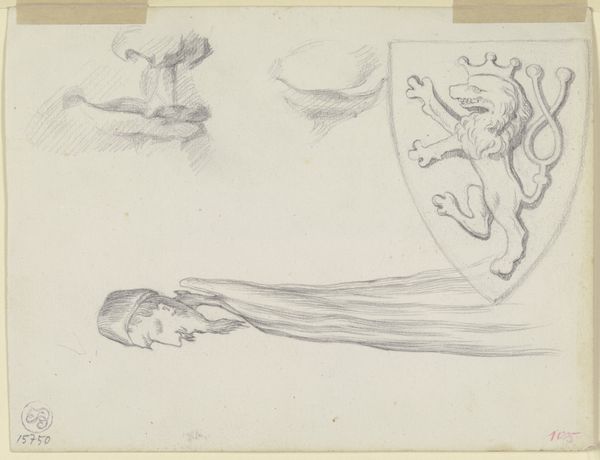
drawing, paper, pencil
#
drawing
#
imaginative character sketch
#
quirky sketch
#
landscape
#
paper
#
personal sketchbook
#
idea generation sketch
#
sketchwork
#
ink drawing experimentation
#
pen-ink sketch
#
pencil
#
sketchbook drawing
#
storyboard and sketchbook work
#
sketchbook art
#
realism
Copyright: Rijks Museum: Open Domain
Curator: This drawing by Ferdinand Oldewelt, titled "Studieblad met schapen te Exloo", dates from somewhere between 1904 and 1912. It's a study sheet, really, done with pencil and ink on paper. Editor: My initial impression is one of quiet observation. A private moment with livestock, sketched in what looks like a casual yet careful manner. There’s something so elemental about the animal’s form captured simply with lines. Curator: Yes, Oldewelt seems to have been deeply interested in recording the realities of rural labor. This wasn’t simply pastoral idealism. Notice how he hasn't shied away from portraying the sheep’s materiality. The dirt, the lanolin in the wool... the tangible aspects of shepherding, rendered directly onto the paper. The means of production, literally sketched. Editor: I see your point. The artist isn't trying to elevate these animals into allegorical beings. Yet, there's still something to be said about the recurring symbolic use of the sheep throughout art history. Consider its association with innocence, sacrifice, and guidance. In a study like this, are we not also witnessing a kind of personal mapping, the artist grappling with those deeply rooted symbols in this landscape of Exloo? Curator: Possibly. But also, the texture and gradations achieved with humble pencil and ink are worth noting. Oldewelt had to understand how these creatures were made of tangible things - flesh, bone, wool. By investigating those materials so intimately through sketching, it reflects labor as artistic output itself. The physical act informs the aesthetic object. Editor: That's valid. Still, looking at the variety of poses, those different heads... they bring to mind a symbolic flock, dispersed and united at the same time. Perhaps he's studying not just forms, but their implied narratives within the context of cultural memory. The animal's collective essence comes through in how these images coalesce. Curator: So, Oldewelt, the maker, and the production process give you access into his symbolic engagement, if you understand it right? For me, it is the tension and skill displayed to describe a life inextricably connected to manual labor. Editor: I think we both see facets of that connection—him using imagery, and you his skill!
Comments
No comments
Be the first to comment and join the conversation on the ultimate creative platform.
